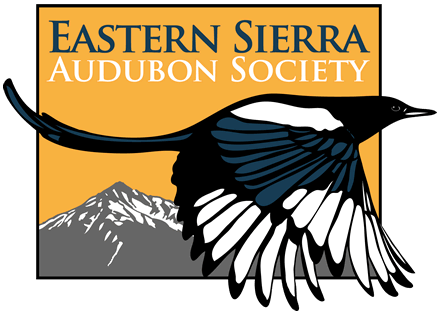Those of us who live in the Eastern Sierra are fortunate that we are relatively close to the largest National Park in the contiguous United States. Death Valley National Park offers great opportunities to explore a myriad of habitats that begin with desert scrub below sea level to sub-alpine forests that reach over 11,000 in the Panamint Mountains.
The major attractions are the oases that offer refuge, food, and water to migrants passing north in spring and south in fall. Birds fly for many hours over a sea of creosote or desert scrub that provides little in the way of necessary amenities. As exhaustion sets in, an oasis of tamarisk, willow and cottonwood, grass lawns, or small ponds serves as a magnet offering rest and respite from travel.
The largest oasis in the Park, and most attractive to birds and birders, is Furnace Creek Ranch. This is, for the most part, a private in-holding that was formerly the Greenland Ranch. Today it consists of an 18 hole golf course, motel, inn, various stores, shops, restaurants, post office, palm groves, and stables with horses. Adjacent are a small airport, the Park sewer ponds, gas station, and visitor center with a gift shop and a small museum. All are surrounded by the greenery provided by an abundance of spring fed water from the hills to the east. The golf course is private property, and present management has gone to great lengths to insure that all others, birders included, are aware that only golfers are allowed on the course. We urge you to restrict your birding to the edges of the course and, instead, seek out the other hot spots at the ranch. The lawn and trees near the motel, the corrals, the residence area behind the restaurant, and palmary near the fire station, the picnic area, the visitor center, the road to the airport, the lawn and trees at the post office, the trees near the grocery store, etc. are all proven areas that have produced many remarkable records. The airport sewer ponds are accessible by parking your car in the lot and walking north along the edge of the lot and down a dirt road to the fenced and gated ponds. Ducks and shorebirds, including those chased up by golfers on the course, are the attraction here. Always search the skies for aircraft and be cautious when they are landing or taxiing.
The other smaller oases are Scottys Castle, Mesquite Springs, Stovepipe Wells, Saratoga Spring, and Panamint Springs (another in-holding). All are easily found on a DVNP map or are road signed. Scottys Castle is particularly nice and always cooler than the other, lower sites. The tree-ringed lawn is especially productive as is the picnic area and maintenance area up canyon. There is a small pond right next to the old bridge with large drive through doors that are permanently closed. Mesquite Springs has a nice riparian area at the entrance to the campground that often has a small amount of flowing water. At Stovepipe Wells the dining hall area and isolated trees are sometimes watered, which is where the birds will congregate. A Sabines Gull was photographed enjoying the swimming pool! The sewer ponds have had the vegetation removed, and the dikes are so high that the water is not visible. Birds accessing the water may be found outside the fence, but the ponds are no longer a hot spot. Saratoga Spring is a large series of ponds surrounded with reeds and a trail. Camping is no longer allowed, but birding is, and some remarkable birds have been found there. Panamint Springs is private property, but birders have been allowed limited access. The newly planted campground is particularly attractive, and a walk around the restaurant/store accesses most of the good habitat. Birders have been asked not to bird the trees near the residences behind the motel unit.
While visiting anytime of the year can be productive, the optimal time for vagrants is mid May to early June, and again mid September to mid November. The list of eastern species that have been discovered in the Park is long and glorious and includes Mississippi Kite, Zone-tail Hawk, Smiths Longspur, Purple Gallinule, Spragues and Red-throated Pipits, Tropical Kingbird, Snow Bunting, Varied Bunting, Rufous-backed Robin, Red-necked Grebe. Ruddy Ground-Dove, and Inca Dove. Then there is the colorful list of warblers such as Cape May, Northern Parula, Magnolia, Black-throated Blue, Black-throated Green, Blackburnian, Yellow-throated, Prothonotary, Kentucky, Connecticut, Mourning, Hooded, Canada, and the list goes on and on.
One observer, Guy McCaskie of San Diego and Californias premier birder, has observed over 325 species at Furnace Creek Ranch! Granted that the rest of us probably couldnt see that many there in two lifetimes it is certainly worth the beautiful drive to see what gems we can find. A check of www.nps.gov/deva/ with links to the DV Weather Report, Events, and the Morning Report for road conditions might be helpful.
Tags: dove, duck, grebe, gulls, hawk, kingbird, longspur, robin, warbler
